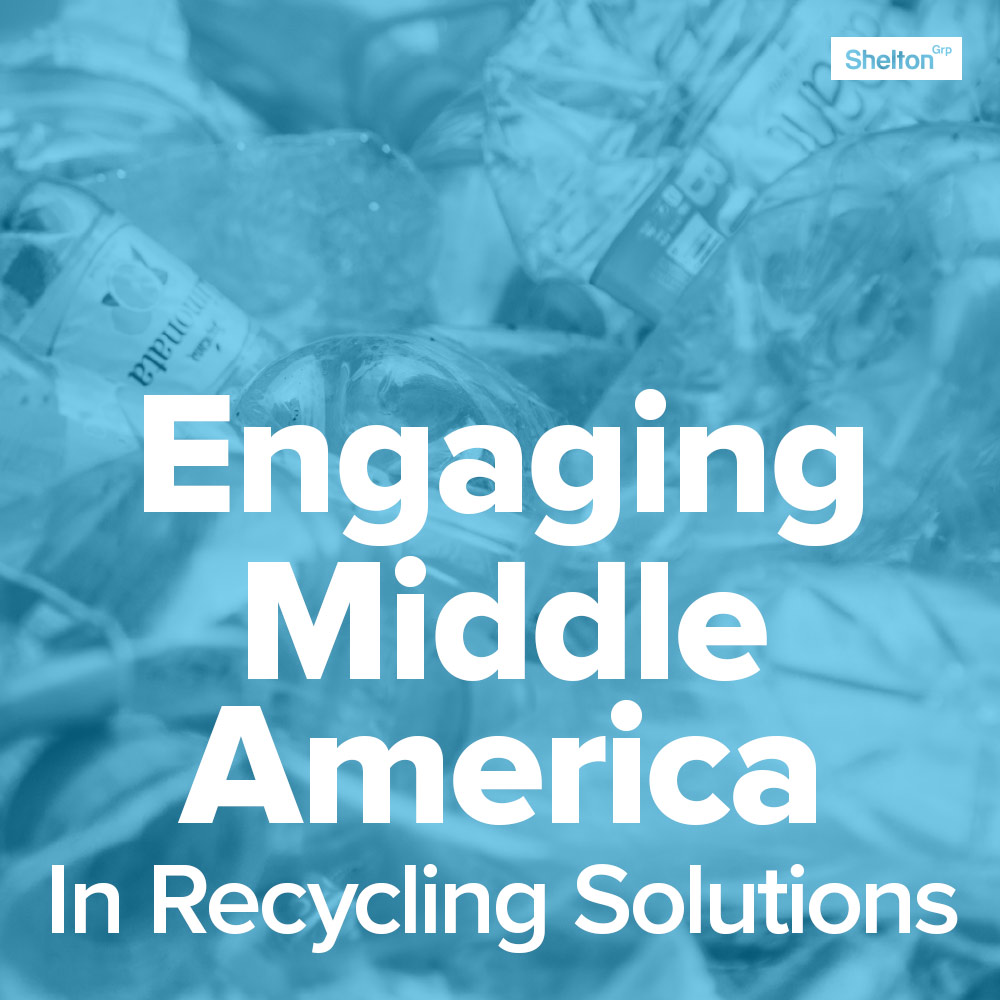Words – and messengers – matter: what we can learn from the attack on our nation’s Capitol
Shelton Stat of the Week
73% of Americans feel moderately to very strongly responsible to change their daily choices to positively impact the environment (down from 78% in 2017) Mini Pulse, May 2020
By the time you read this, you will have undoubtedly already read multiple articles about the horrific events of January 6, 2021. This is not another piece decrying the violence (though I certainly do), nor is it a piece of hand-wringing about how we’ll bring our nation back together (though I’ve done a lot of that). This is a piece, much like my piece about “Decoding the Disinformation Machine” and the one about messaging lessons from QAnon, that attempts to understand the rhetoric that motivated some of our fellow Americans to unimaginable action and identify lessons that can be used for good.
Here’s what I see:
-
- Loss aversion messaging is a powerful tool. We have seen this repeatedly in our work to motivate Americans to improve the energy efficiency of their homes. Messaging like “you’re losing money every month” generates far more click-throughs than “you can save money every month.” This is a truism in the world of behavioral economics: fear of loss is a much more powerful motivator than the promise of gain.
If you look at the rhetoric leading up to last Wednesday’s events – not just from President Trump but from many of his loyal messengers – it’s laced with loss aversion messaging. Messaging like “stop the steal” has a much more powerful resonance than messaging like “win the White House!” And those three words – “stop the steal” – have a whole lot of other things going for them beyond triggering a heightened emotional response. It’s clear what the recipient of the message is supposed to do – stop what’s happening – and it’s clear that something wrong is going on here – stealing. So this messaging framework serves to simultaneously light up people’s emotions, set up a good vs. bad narrative and make it clear what side the intended recipient of the message should be on and that they should take action.
Again, I do NOT advocate this messaging or any of the appalling rhetoric that we’ve seen come out of the White House about the election. I’m playing detective or anthropologist and looking for clues that we can use in the sustainability arena to make our messaging powerful. And one thing we can learn from the events of the past several weeks is that framing sustainability messaging in terms of loss with a clear good vs. bad call to action could work well for us.
- We need a charismatic leader who’s unafraid to “tell it like it is.” Rudy Giuliani, Michael Flynn and Donald Trump, Jr., all essentially said the same things President Trump said in the 24 hours leading up to the attack on the Capitol. But my gut tells me people wouldn’t have thrown their civil liberties to the wind and charged into the Capitol were it not for the encouragement of a leader that they see a kinship with. A leader who thinks and speaks like they do, social convention be damned.
Now, I don’t know exactly how we get a leader like that. I would posit we need multiple leaders who speak the uncomfortable truth and are willing to back up their beliefs with actions – leaders who we can “see ourselves in.”
My friend Joel Makower said something to me almost a year ago that really stuck with me. The gist of it was, “We had Ray Anderson and Paul Polman … who’s the charismatic business leader that will champion sustainability now?” I think that’s an opportunity on offer for several business leaders – it doesn’t have to be, and shouldn’t be, just one. (Why aren’t there more Ray Andersons)
We need business leaders who are willing to speak the truth about climate change, social inequalities and the irreparable damage of both. Business leaders who are willing to risk, bucking the status quo of pre-prepared PR statements with real feeling, real emotion, real action for the future of our society and environment (which are inextricably tied to the future of business, by the way). If you have one of these in your company, get him/her front and center in your sustainability storytelling efforts.
- Our messaging and leaders have to make citizens believe we can change the future. That’s what’s just so gut-punching about what happened on January 6. The Americans who stormed into our Capitol actually BELIEVED they could change the outcome of the election after the fact, after multiple recounts and lawsuits. They believed/believe the election was stolen, and it was up to them to uphold our democracy. They believed/believe they are the good guys, the patriots who will deliver us from evil. My belief set is 180 degrees opposite of theirs … and we certainly don’t need to send a mob into our lawmakers’ chambers, violently demanding action on climate.
But we do need to help people believe they can change the course of the future. The news on climate is so bad and the forecast for the planet our children will grow up in is so dire, it can send people to a place of hopelessness, a place of “why bother.” Whether you’re a politician or a business person, your job is to help them see what we can create and inspire them to believe we can indeed avoid disaster. Your job is to point people to the prescriptive, positive actions they can take to create that better future. In short, your job is to use the power of rhetoric, behavioral framing and charismatic spokespeople to help citizens believe we can create a better future and inspire and motivate them to positive action.
- Loss aversion messaging is a powerful tool. We have seen this repeatedly in our work to motivate Americans to improve the energy efficiency of their homes. Messaging like “you’re losing money every month” generates far more click-throughs than “you can save money every month.” This is a truism in the world of behavioral economics: fear of loss is a much more powerful motivator than the promise of gain.
In the end, our greatest danger is not the citizens who storm our policy halls or who think wildly differently than we do. In the end, our greatest danger is apathy.

20 C-suite sustainability champions for 2021 – GreenBiz
Over the past year (and even over the past week), we’ve watched the outcomes of many different types of leaders, for better and for worse. As this GreenBiz article points out, crisis situations can serve as the ultimate test of leadership, differentiating the innovators and those who are “playing the long game.” As we’re thinking about the need for multiple business leaders across industries to speak truth, this is certainly a group of C-suite leaders to watch. We’re especially interested in how several of them are leading their companies toward authentic change in diversity, equity and inclusion. Read more…

How should schools teach kids about what happened at the US Capitol on Jan. 6? – The Conversation
In this article from The Conversation, six education experts share insights on how to help kids process last week’s disturbing events. Kids aren’t the only ones who are processing, though. As a professor from North Carolina State says in the article, “This moment is an opportunity for everyone to deepen their understanding about democracy.” As sustainability, DE&I and communications professionals, the thought-starters in this article can perhaps help us engage in difficult conversations – and even turn them into powerful conversations. “This is an opportunity to connect current events with other moments in American history when the nation’s institutions were tested or our leaders fell short in their commitment to core American values,” an expert from Tufts University encourages readers. Read more…
Engaging Middle America In Recycling Solutions
Before COVID-19, 41% of Americans wanted to be seen as someone who buys green products, and many could cite an example of a brand they’d purchased (or not purchased) because of the environmental record of the manufacturer. Now, in the middle of the pandemic, the numbers have dropped dramatically. The big question is, what does this mean for engaging Americans in their number one green activity: recycling? Another question is, what does it mean for companies’ sustainability brand?
Our latest report answers these questions by digging into current consumer attitudes, how they impact consumer behavior, and how organizations should respond to ensure recycling – and other green behaviors – keep happening.


TAGS:Corporate Sustainability